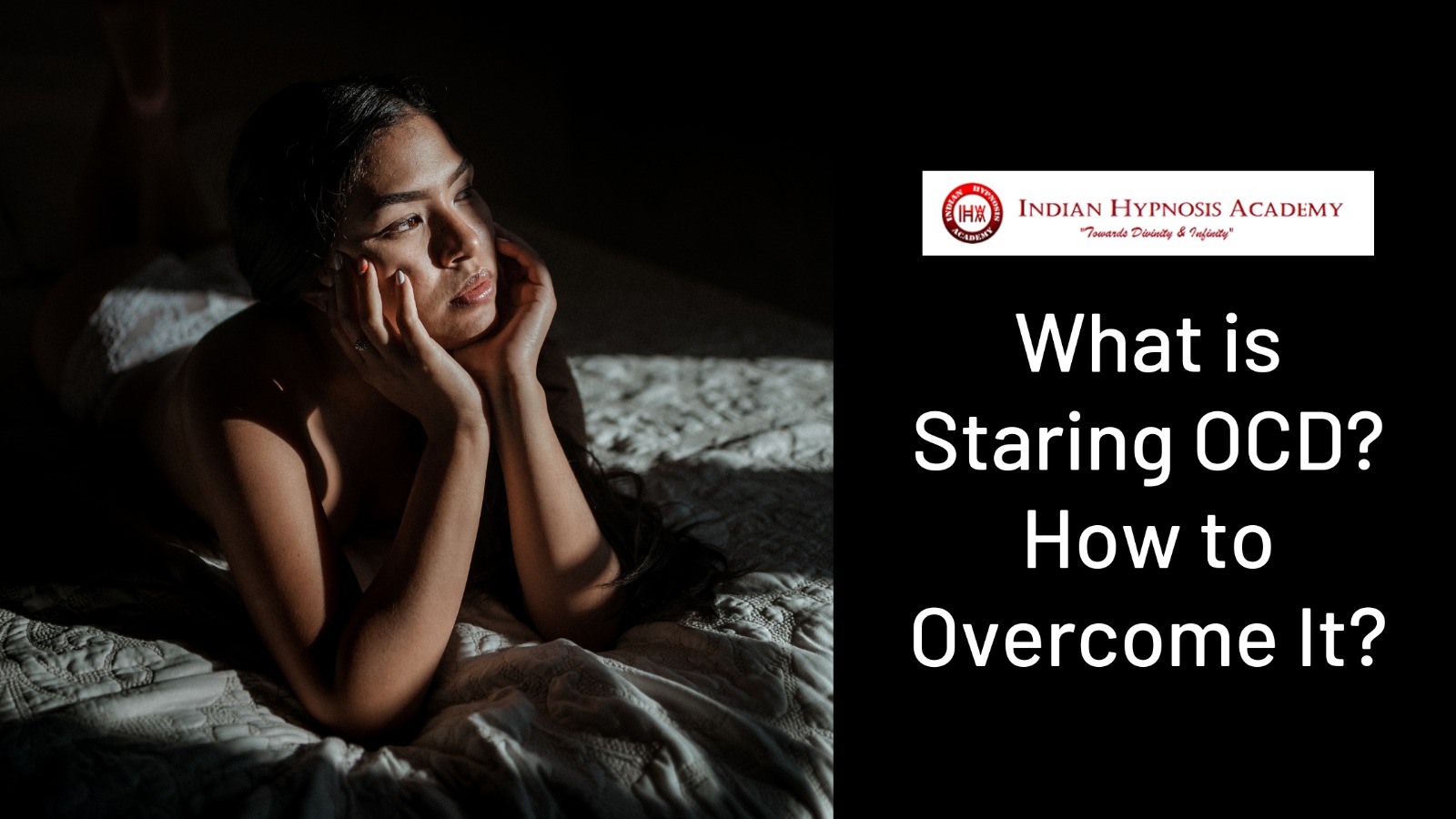Staring OCD is an obsessive-compulsive disorder (OCD) characterized by the need to look at people, animals, objects, or objects for an uncontrollable period of time This condition can be distressing and can interfere with a person’s daily functioning, and through so has caused distress , despair , . and social isolation. In the next section, we will explore a closer look at OCD, its diagnosis and definition, its symptoms, causes, and possible treatment options.
Symptoms of Staring OCD
OCD obsessions are a condition that can cause strong obsessions with looking at people, animals, objects, or objects for extended periods of time This can be upset and difficult to control, leading to repetitive staring behaviors that interfere with daily life.
One of the main symptoms of staring OCD is an uncontrollable need to stare. Individuals with this condition may feel a compelling need to focus on something, even when it is socially inappropriate or causing them distress.
Another symptom is difficulty looking away from the object of fixation. This can cause individuals to stare for long periods, despite feeling anxious or uncomfortable.
Staring OCD can also involve repetitive staring behaviors that interfere with daily life. For example, an individual with OCD may spend hours staring at a particular object, such as a lamp or a door handle, causing them to be late for appointments or miss important events.
After staring, individuals with OCD may feel anxious, ashamed, or guilty. This can cause them to avoid social situations or public places where they might feel the urge to stare.
-

What are 4 Types of OCD ? (हिंदी में)
-

How to Prevent Corona Virus into becoming OCD ? (हिंदी में)
-

OCD Self Treatment by Dr. JP Malik (in Hindi)
-

How to Overcome Religious OCD | Dr. J P Malik (in Hindi)
-

Online Hypnosis Session to Overcome Religious OCD | Complete Treatment by Dr. JP Malik (in Hindi)
-

OCD Kitne Types ki Hoti Hai | OCD Theek Kaise Kare | Tarun Malik (Psychologist)
Causes of Staring OCD
Like other styles of OCD, OCD is a extreme intellectual infection that may have loads of outcomes. Although the etiology of visual OCD is not absolutely understood, several factors are thought to play a role in its development.
One opportunity is genetics. Studies have proven that people with a own family records of OCD are more likely to have the situation themselves. This suggests that OCD can also have a genetic predisposition.
Environmental factors may also contribute to the development of staring OCD. Traumatic lifestyles activities which includes abuse, neglect, or the loss of life of a cherished one can trigger the onset of OCD signs. Similarly, chronic strain or anxiety can growth the chances of developing this circumstance.
Brain chemistry is some other viable thing within the development of staring OCD. Researchers consider that an imbalance of sure chemicals in the brain, which includes serotonin, performs a position within the development of OCD.
Other hazard factors for staring OCD encompass gender and age. Women are much more likely than guys to increase OCD, and the situation frequently develops in childhood or early life.
Treatment for Staring OCD
One of the most effective treatments for staring OCD is Cognitive Behavioral Therapy (CBT). CBT is a form of therapy that focuses on changing negative thought patterns and behaviors. During CBT sessions, a trained therapist will work with the man or woman to become aware of the triggers that motive their staring behavior and train them how to replace those behaviors with healthier coping strategies.
Another form of therapy that has proven promising consequences for OCD is Exposure and Response Prevention (ERP). ERP involves gradually exposing the individual to their fears, such as looking at pictures of people or animals, and gradually increasing the exposure time. The goal is to help the individual learn to resist the urge to stare and reduce anxiety.
In a few instances, medicine will also be advocated as part of the treatment plan. Selective serotonin reuptake inhibitors (SSRIs) are a kind of medicine that can be used to lessen OCD symptoms. These medications work via growing the tiers of serotonin within the brain, that could assist modify mood and tension.
It’s essential to word that remedy need to usually be taken under the steerage of a healthcare expert, and it could make the effort to discover the proper remedy and dosage that works quality for the individual.
In addition to therapy and medication, there are several self-help strategies that can help manage staring OCD symptoms. Mindfulness sporting activities, along with meditation and deep respiratory, can help individuals with OCD learn to cognizance on the existing moment and decrease tension.
Challenging negative thoughts is another important self-help strategy for managing OCD symptoms. When a negative thought or compulsion arises, it’s essential to recognize it and challenge it with rational thinking. This can help break the cycle of negative thoughts and reduce anxiety.
Joining a support group can also be helpful for individuals with staring OCD. A support organization can offer a secure and non-judgmental space to proportion experiences and analyze coping techniques from others who have long gone thru comparable stories.
How to Overcome Staring OCD
you or someone you know is struggling with staring OCD, it can feel overwhelming and scary. The suitable information is that there are steps you may take to assist manipulate and conquer the situation.
One of the maximum essential matters you may do is seek professional help. A intellectual fitness professional, consisting of a therapist or psychiatrist, can paintings with you to develop a customised remedy plan based in your specific needs and circumstances. They can also provide guidance and support as you navigate the process of recovery.
In addition to searching for expert assist, there also are matters you may do on your own to help control OCD signs and symptoms. Mindfulness sporting events, inclusive of deep respiratory or meditation, assist you to learn how to awareness on the present moment and reduce anxiety. Similarly, difficult poor thoughts that make contributions to OCD signs may be a useful approach. For instance, instead of telling yourself which you have to stare at someone or object, try reframing the state of affairs in a more high-quality light, including reminding your self that it is ok to appearance away and recognition on some thing else.
Another strategy that can be helpful is joining a support group. This can provide a safe and supportive space to share experiences and learn coping strategies from others who are going through similar challenges.
Finally, it’s important to be patient and kind to yourself as you work to overcome staring OCD. Recovery is a process, and it can take time and effort to see progress. But with the right support, treatment, and mind, it is possible to manage and overcome the condition. Remember that you are not alone, and there is hope for a brighter future.
Conclusion:
OCD care is sensitive sufficient to intrude with someone’s each day lifestyles. But with the right treatment and support, people with diagnosable OCD can learn to control their signs and improve their great of existence. If you or someone you recognize is suffering with OCD, are looking for professional help and find available remedies. Remember, there may be desire, and recuperation is viable.
Frequently Asked Questions (FAQs):
1. What is staring OCD?
Staring OCD is a type of obsessive-compulsive disorder characterized by an intense urge to stare at a person or object, often leading to significant distress and impairment in daily life.
2. What are the symptoms of staring OCD?
Symptoms of staring OCD can include an overwhelming urge to stare at a person or object, feelings of guilt or shame, anxiety, and difficulty controlling the urge to stare.
3. What causes staring OCD?
Staring OCD is believed to have multiple causes, including genetic, biological, and environmental factors. Research has shown that individuals with a family history of OCD are more likely to develop the disorder, suggesting a genetic component
4. Can staring OCD be treated?
Yes, staring OCD can be treated with a combination of therapy, medication, and self-help techniques. Cognitive-behavioral therapy (CBT) is a type of talk therapy that can be effective for OCD.
5. What types of therapy are effective for staring OCD?
Cognitive-behavioral therapy (CBT) and exposure and response prevention (ERP) therapy are two types of therapy that have been shown to be effective for treating staring OCD.
6. What medications are used to treat staring OCD?
Selective serotonin reuptake inhibitors (SSRIs) are the most commonly used medications to treat OCD, including staring OCD. These medications work by increasing the levels of serotonin in the brain, which can help to reduce anxiety and obsessive thoughts.
7. Is staring OCD common?
While staring OCD is considered a relatively uncommon subtype of OCD, it can still have a significant impact on those who experience it. According to some estimates, staring OCD affects around 1-2% of the population.
8. Can staring OCD be cured?
While there is no known cure for OCD, including staring OCD, many people are able to manage and overcome their symptoms with the right treatment and support. This typically involves a combination of therapy, medication, and self-help techniques tailored to the individual’s needs and circumstances.
9. Can self-help techniques be effective for managing staring OCD?
Yes, self-help techniques such as mindfulness exercises and challenging negative thoughts can be helpful for managing staring OCD symptoms.
10. Can staring OCD cause physical harm?
Staring OCD does not typically cause physical harm, but it can lead to significant psychological distress and impairment in daily life.
11. Can staring OCD be a symptom of another condition?
Staring OCD can sometimes be a symptom of other conditions, such as anxiety disorders or tic disorders. In some cases, staring behavior may be a compulsive response to feelings of anxiety or distress.
12. Is staring OCD a type of addiction?
Staring OCD is not considered an addiction, but it shares some similarities with addictive behaviors in terms of the intense urges and difficulty controlling behavior.
13. Can staring OCD develop later in life?
Staring OCD can develop at any age, but it is most commonly diagnosed in childhood or adolescence. In some cases, the condition may not be recognized or properly diagnosed until later in life.
14. Can staring OCD be passed down through families?
There is some evidence to suggest that OCD may have a genetic component, but the exact inheritance pattern is not fully understood.
15. How can I find help for staring OCD?
If you are struggling with staring OCD, you can talk to your doctor or mental health professional for guidance and support in finding the right treatment options for you.
Refrences:


